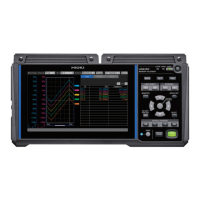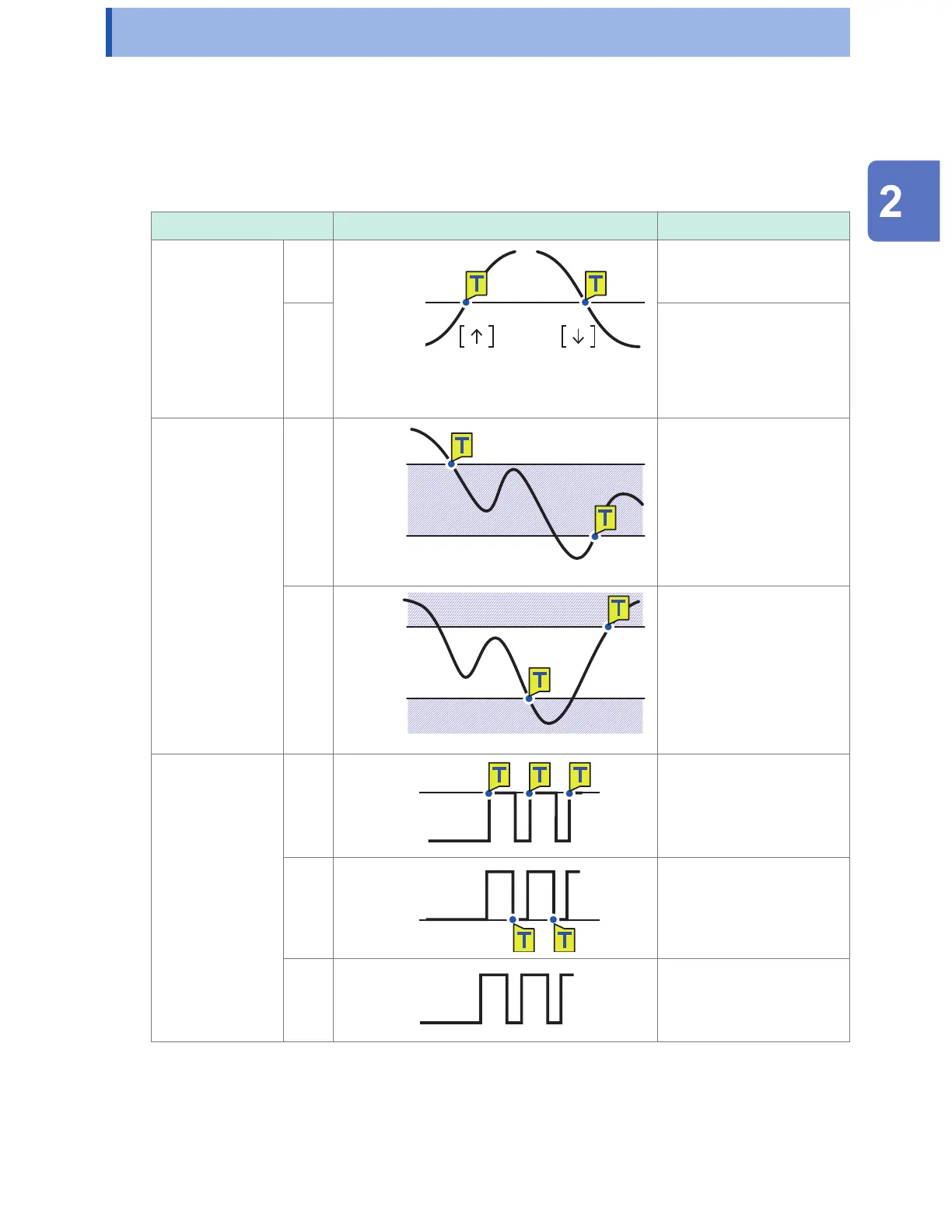2.1 Trigger Meanings
This section describes how to set start or stop conditions for measurement.
You do so by setting the type of trigger (level, window, or pattern) and the slope (signal rising or
falling).
Trigger types
The following three types of triggers are provided:
Type Operation Description
Level trigger ↑
Trigger slope
Trigger level
Input
waveform
Activates when the
waveform equals or exceeds
the set level while rising.
↓ Activates when the
waveform falls below the set
level value. However, the
trigger cannot activate when
the waveform equals the
value while falling.*
1
Window trigger IN
Upper
limit value
Lower
limit value
Activates when the
waveform enters the range
dened by a pair of upper
and lower limit values. As
well, the trigger activates
when the waveform equals
the upper limit value while
falling and the lower limit
value while rising.
OUT
Upper
limit value
Lower
limit value
Activates when the
waveform exits the range
dened by a pair of upper
and lower limit values.
However, the trigger cannot
activate when the waveform
equals the upper limit value
while rising or the lower limit
value while falling.*
2
Pattern trigger 1
High
Low
Activates when a logic signal
changes to 1.
0
High
Low
Activates when a logic signal
changes to 0.
X
High
Low
Ignores the signal. No trigger
will activate.
*1:
For pulse channels , only if the level value is set at zero, the trigger can also activate when the pulse
equals zero while falling.
*2:
For pulse channels , only if the lower limit value is set at zero, the trigger can also activate when the pulse
equals zero while falling.
As well, only if the upper limit value is set at zero, the trigger can also activate when the pulse equals zero
while rising.
Trigger Function
www.GlobalTestSupply.com
Find Quality Products Online at: sales@GlobalTestSupply.com

